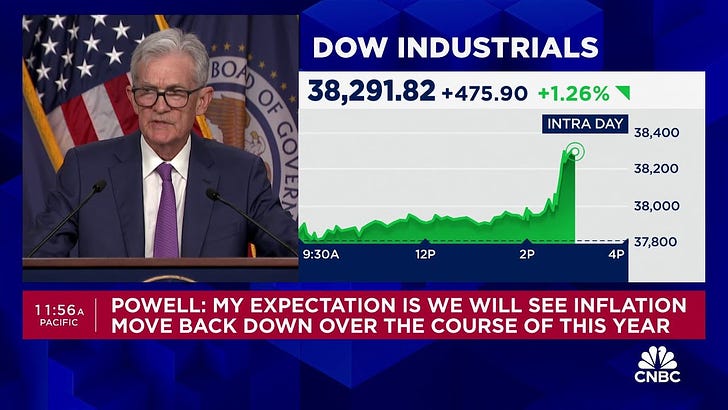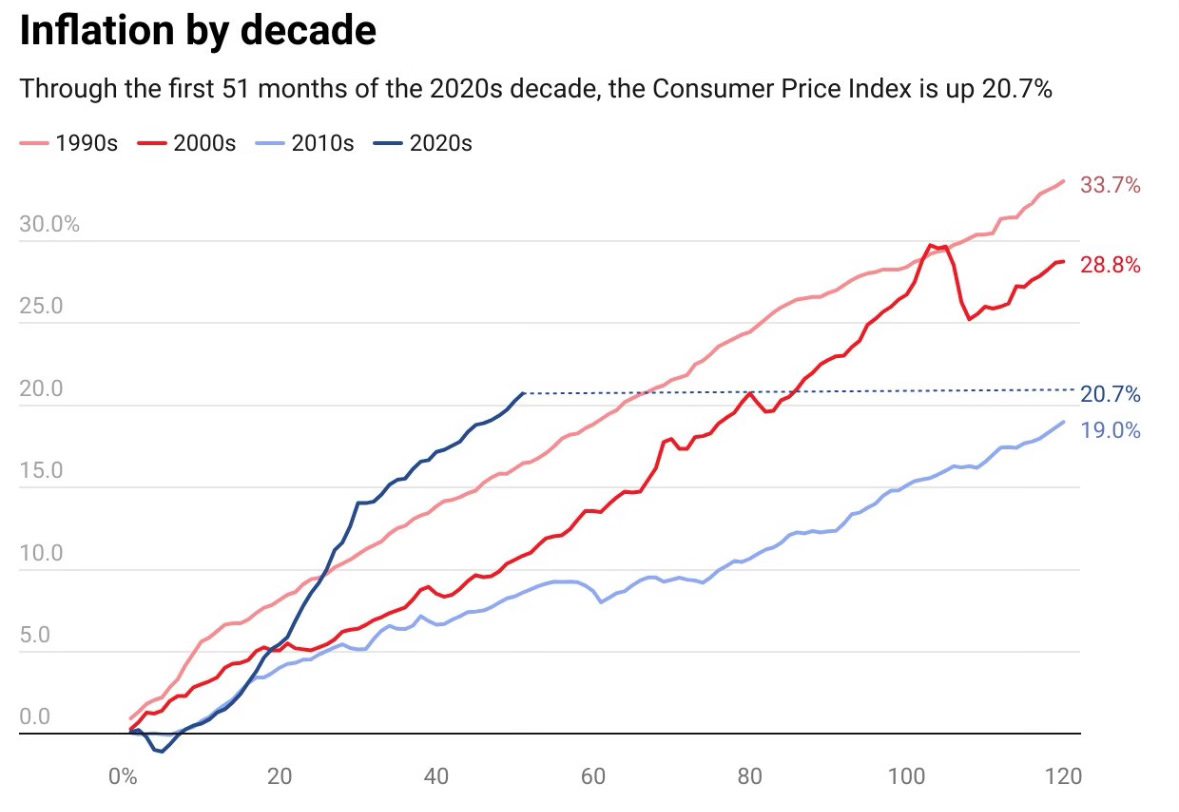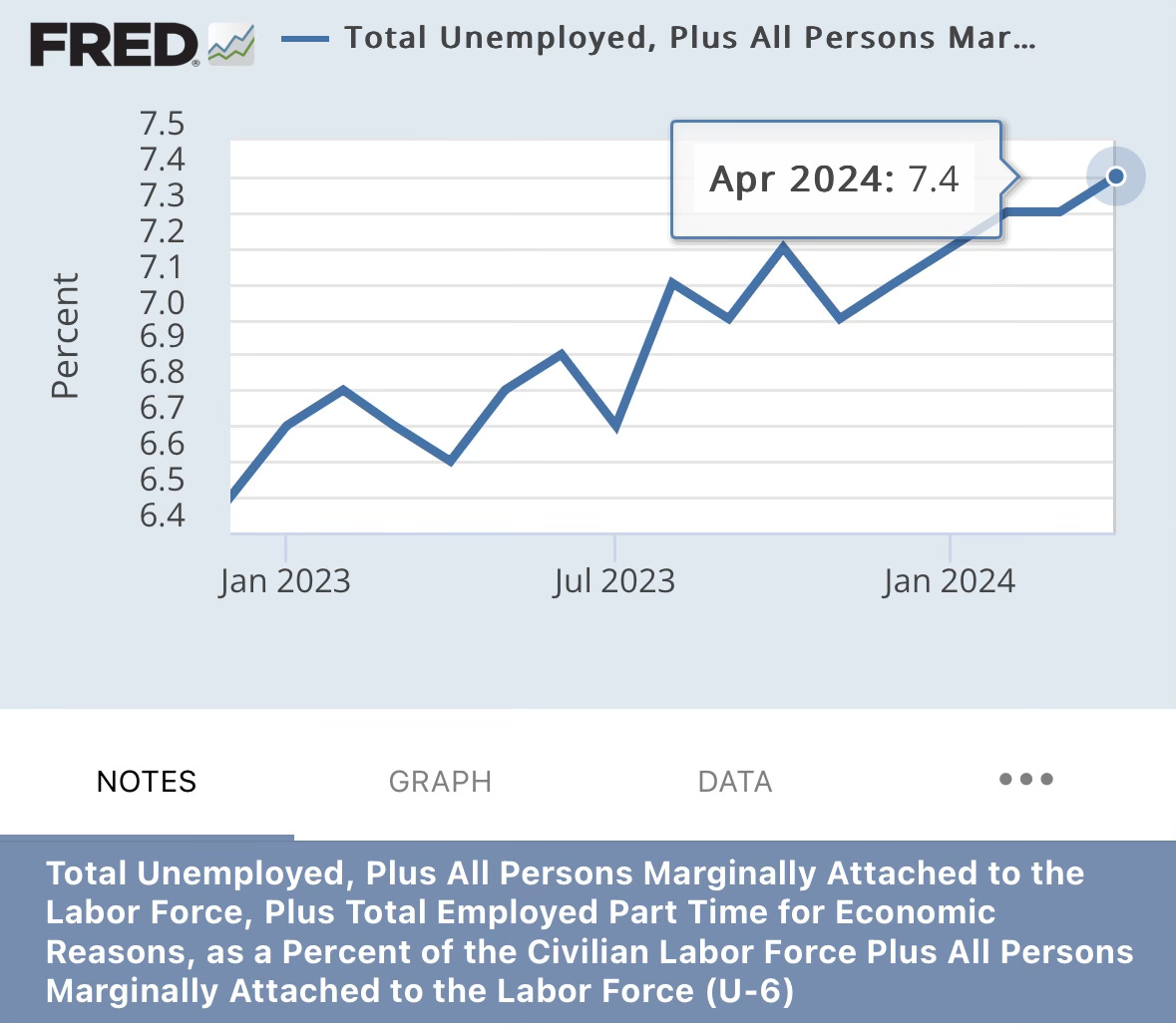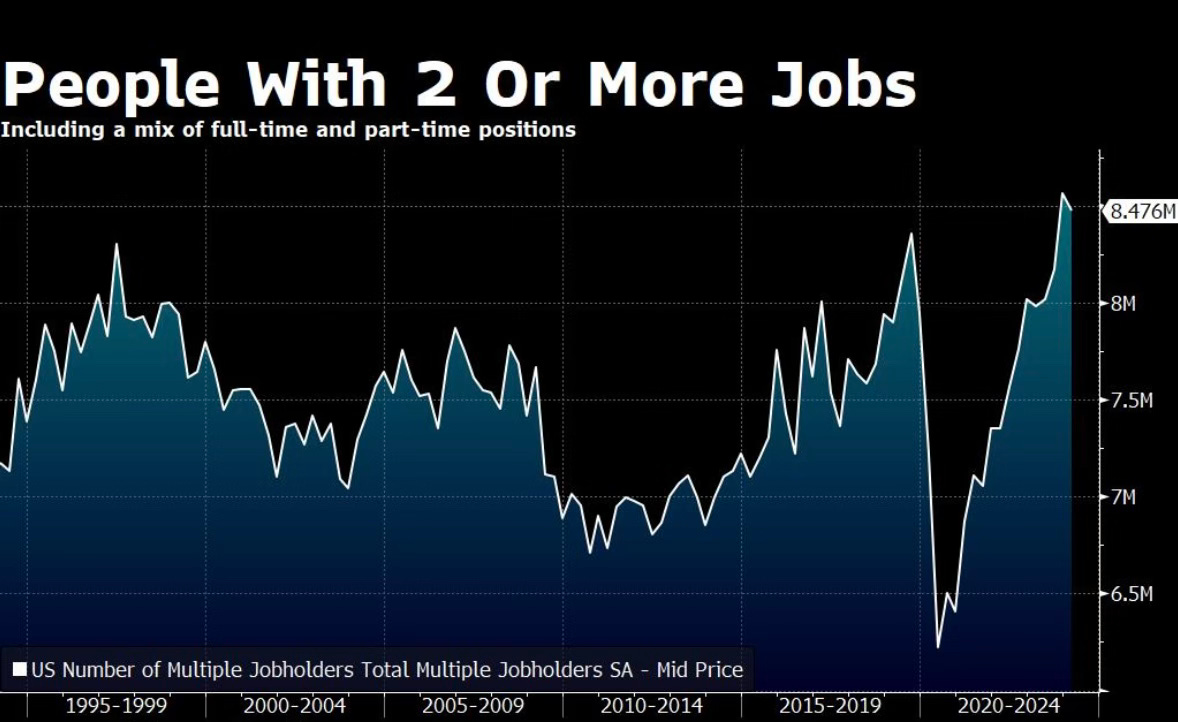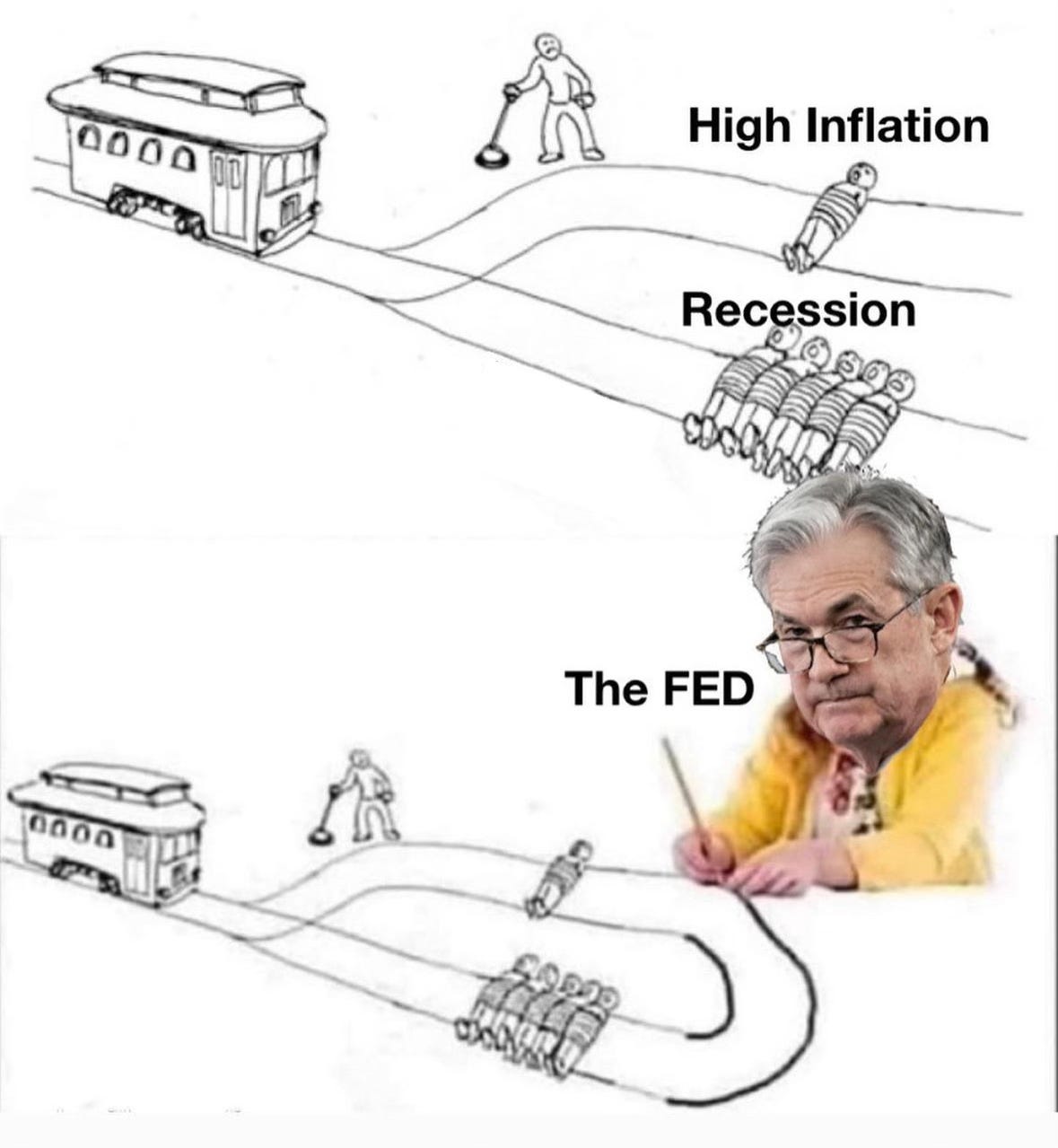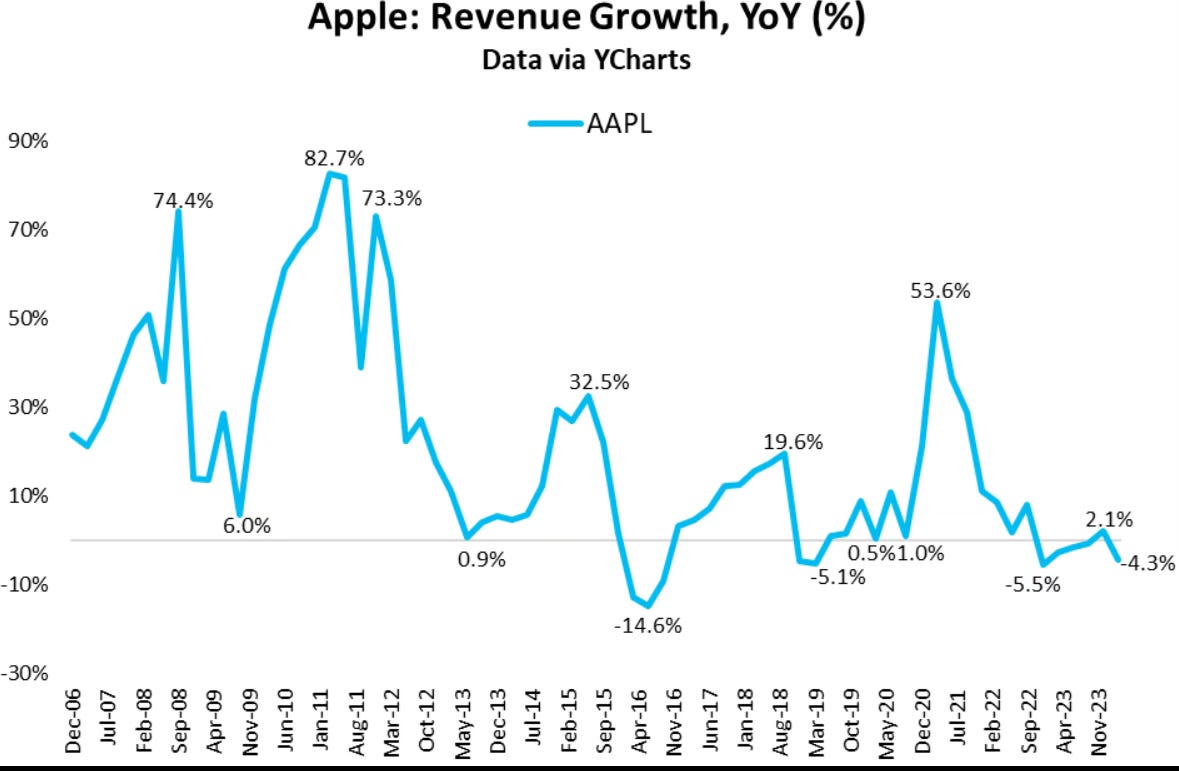In the realm of economics, this era resonates more like a somber rock song, reminiscent of Poison's "Every Rose Has Its Thorn." Each economic indicator strikes a chord, laden with the weight of data painting a vivid and sobering picture. Unlike the upbeat rhythms of recent decades, today's economic melody is shrouded in dissonance and discord, with inflation looming as the central thorn. This inflationary pressure has cast a dark cloud over the perception of everyday Americans regarding the economy's health. April saw consumer confidence plummet to its lowest level since mid-2022, with high prices firmly etched in the public's consciousness, as highlighted in data released by the Conference Board.
“ I Don’t see the Stag or the Flation” - Fed Chair Jerome Powell
This week's economic scorecard reveals a troubling rock symphony. Despite soaring inflation figures, Federal Reserve Chair Powell remains steadfast in denying the specter of stagflation or inflation playing down the 2024 inflation numbers. However, the numbers tell a different story.
Since 2021, inflation has surged by a staggering 20%, a rate unseen in the past two decades and reminiscent of the tumultuous stagflation era of the 1970s. The fact that inflation figures today are calculated differently, masking the severity of the situation, does little to alleviate the economic unease. Even with skewing the numbers to under report inflation the most recent data suggest the inflation for 2024 is going to be 4% or higher.
The job market mirrors this economic gloom, with inflation acting as the thorn that exacerbates labor market woes. Unemployment rates, particularly the U6 total unemployment rate, surged to 7.4%, marking the highest level since November 2021, up an incredible 17%.
This uptick in unemployment signifies a concerning trend, indicating that more individuals are without work compared to three years ago, showcasing the deterioration in the labor market amidst escalating inflation. This surge underscores the challenges faced by job seekers in finding sustainable employment. The U6 employment data, a more comprehensive measure that includes discouraged workers and those in part-time jobs for economic reasons, paints a bleaker picture compared to the traditional unemployment rate, which excludes those who have stopped looking for work, coming in at 3.9%. Additionally, the record-high number of individuals working multiple jobs reflects the struggle of workers to make ends meet in the face of economic inflation.
As the economic data unfolds, it becomes evident that the inflation crisis is not just impacting individuals but also permeating through businesses and the broader economy. The Federal Reserve's decision not to raise interest rates this week, coupled with Powell's denial of stagflation or significant inflation, appears increasingly misguided in light of the economic challenges gripping the nation. This disconnect between the Fed's stance and the ground realities of inflation and economic struggles echoes the sentiment captured in Poison's lyrics - that every era, while unique, shares the common thorn of inflation that can cause economic pain.
Once towering symbols of stability, corporate giants now find themselves navigating turbulent economic currents. McDonald's, an emblem of average American spending habits, recently disclosed unexpected profit misses alongside a sharp downturn in same-store sales across the United States. This decline, from a robust 12.6% growth rate last year to a mere 2.55% growth, starkly illustrates the consumer's tightening purse strings amidst escalating prices in the burger company's domain. The traditionally price-inelastic demand for fast food has exhibited signs of elasticity, signaling a shift as consumers become increasingly conscious of price considerations. Even CEO Chris Kempczinski acknowledged during the earnings call the underlying challenge encapsulating McDonald's numbers, stating, "Consumers continue to be even more discriminating with every dollar they spend as they face elevated prices in their day-to-day expenditures."
Starbucks, a colossal presence in the consumer landscape, encountered an unprecedented quarterly sales decline for the first time since 2020, marking a significant shift in consumer behavior. The reduction in foot traffic by 7% year over year underscores a hesitancy among consumers to spend, particularly under the weight of inflationary pressures. Within its North America and US operations, same-store sales experienced a 3% decline, aligning with the overall decrease in foot traffic. Interestingly, while foot traffic decreased, there was a notable 4% increase in ticket size. This notable change reflects a fundamental shift in the demand curve for premium coffee products, previously perceived as relatively resistant to economic downturns.
Tech giant Apple, revered for its must-have consumer products, faced a dramatic and alarming decline in revenue for the second consecutive year down -4.5%. The flagship iPhone sales plummeted by a staggering -10%, marking one of the most significant downturns in recent history for the company. This downturn was not limited to iPhones but extended to other product categories like iPads and wearables, tarnishing Apple's once-unblemished narrative of relentless growth and innovation.
(For the Full report consider being a paid subscriber and continue to get future analysis and insights you can find here from coast to coast.)
Keep reading with a 7-day free trial
Subscribe to The Coastal Journal to keep reading this post and get 7 days of free access to the full post archives.

